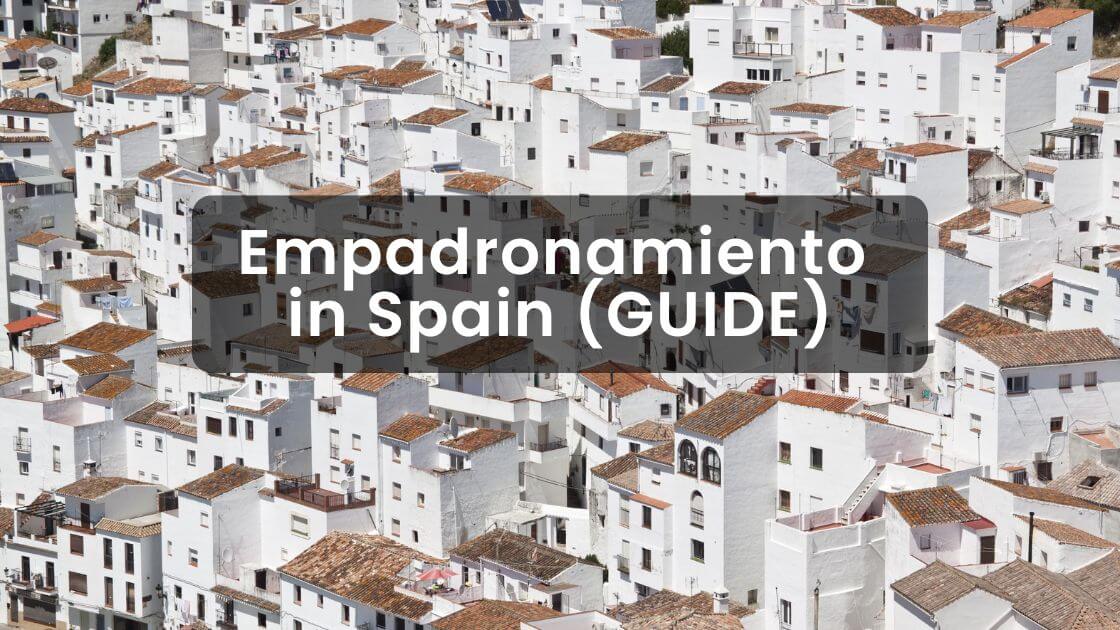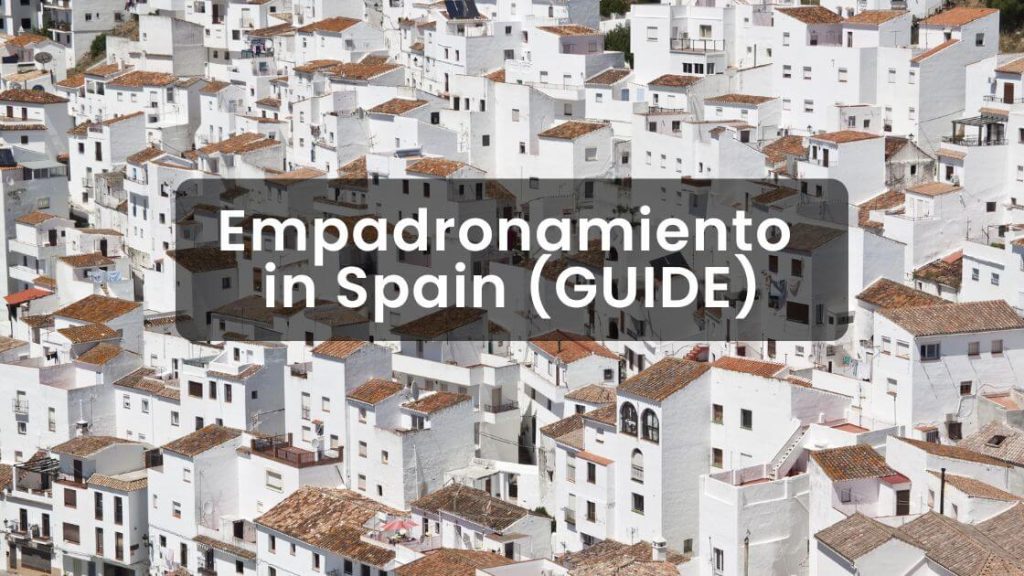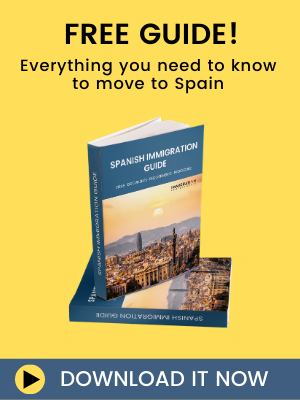
One of the most important steps you will have to take when arriving in Spain is registering in the city hall.
This registration, called “empadronamiento” will be necessary to carry out many legal procedures, and therefore it is a very important document.
But, how can you obtain it? How can I get my empadronamiento? Can I do it online?
In this post, we will explore everything you need to know about this procedure, from the detailed requirements to the most frequent and common doubts.
Content
ToggleWhat is empadronamiento in Spain?
Getting your empadronamiento is the process where you register at the city hall of the city or town in which you live, in order to record the exact address where you usually reside, as well as the other people who live with you.
Therefore, the “padrón” is the document issued by the city hall that certifies this fact: that you are living under X address, since X date, and with X people.
This is an obligation of all those who live in Spain, so you must register (obligatorily) once you move to another city or arrive in the country for the first time.
In return for this obligation, the empadronamiento grants you the right to a series of advantages and benefits.
And that is what we explore in the following sections.
Who needs a Padrón certificate?
You need a padrón certificate in Spain as long as:
- You are a foreigner and you have just arrived in the country. We recommend that you register as soon as possible once you enter Spain so that the number of days in Spanish territory begins to count early on
- If you move to another city or town in Spain
- If you have had a child, as a parent you are responsible for registering them in the city hall
- If you have not done so previously
Empadronamiento benefits
Obtaining your empadronamiento is useful for a large number of procedures and processes with the Spanish administration.
If you are a foreigner, it is proof that certifies and accredits the time that you have been in Spain (both legally and illegally), and it will be a key proof for example when requesting your residency by arraigo or even to obtain the Spanish nationality.
But, in addition to this, it grants you access to different rights, such as, for example:
- access to municipal services
- being able to apply for a health card
- enrolling your children in school
- apply and obtain social assistance
- to vote in elections (if you are a Spanish national)
- apply for your identity card or DNI (or renew it)
But it is just as important to understand what you can do with your empadronamiento as what you CANNOT do.
In that sense, getting your empadronamiento is not equivalent to a residence permit, or a work permit.
That is to say, with your empadronamiento you are not acquiring the right to live legally in Spain.
In order to be able to live legally in Spain, you must apply for a residence permit.
And for the same reason, the empadronamiento will play an essential role, because depending on the city in which you are registered, you will be able to request an appointment in one immigration office or another.
How to get empadronamiento/padron: in person
In general, to get your empadronamiento you must go in person to the town hall of the municipality where you want to register.
Although, as we will see in the following section, many times this procedure can be done online, in many others, as in the case of smaller cities, you will have to go in person.
The most important thing here is to check if you need to make an appointment for your census registration beforehand, or if you can go directly.
To do so, you should check this information on the website of your city hall, which will also specify requirements and other relevant information.
On the day of your visit, please note that you will have to fill out a registration form, and with it, you will receive:
- What’s called “volante de empadronamiento“, which will be delivered immediately and is used for basic formalities
- The “certificado de empadronamiento“, which is legally valid for official procedures, may take a few days and usually has an administrative cost.
How to get empadronamiento/padron: online
Nowadays, there are many municipalities that already offer the option of obtaining empadronamiento completely online, without having to go in person.
To do this, you should visit the website of your town hall and check the available options, and confirm if the online one is one of them.
If so, also make sure to check who exactly is allowed to register online, since many times, even though this is an option, not all individuals can do it.
Also, keep in mind that there may be other methods available such as telephone registration.
To get your padrón online, you will need Cl@ve PIN or Cl@ve Permanente, and you will have to fill out an online form.
Once completed, and depending on the city, you will receive an instant registration form or an email confirmation within a few days.
In some cases, you may be asked to come in person to complete the process.
Documents needed for empadronamiento
In order to get your padrón in Spain, you must submit the following documents:
- Provide your DNI, NIE, and/or passport (i.e. document that identifies you)
- Documentation that proves that you make use of your home. This can be through:
- Rental or lease contract, if you live as a tenant
- Deed of sale, if you have acquired the property
- In the case that you live as a renter, you must also provide a signed authorization from the owner of the apartment in which you live to accept your registration at that address.
- If you wish to register your children, in addition to their passport or ID card, you must also provide the family book
FAQs about empadronamiento in Spain
Due to the great importance of empadronamiento and the number of procedures that require it, it is very common to have doubts about this document.
Thus, below we have summarized the most frequently asked questions about registering in your address in Spain and we have concisely solved them:
When you should renew your padron certificate?
This point is very important. Generally speaking, it is NOT necessary to renew the padrón.
However, there is an exception. Foreigners from outside the European Union who live in Spain and do so WITHOUT permanent residence must renew their empadronamiento every 2 years, counting from the date of the initial registration.
This is fundamental, since in case of not doing so, the city hall would process the cancellation of the padrón.
Therefore:
- If you are a non-EU foreigner with a temporary residence card, you must renew the padrón every 2 years
- If you are an EU citizen, have permanent residence, or have obtained Spanish nationality, you should NOT renew your census registration
How you can get a copy of the certificate?
To download the census certificate, you must follow the steps below:
- Check if your municipality allows online downloading. Each town hall works differently, and some allow online downloading from their websites through cl@ve, electronic ID, or digital certificate.
- If so, use any of the above methods to download the empadronamiento in PDF format. To enter the portal, simply Google empadronamiento + the name of your municipality.
- If your municipality does not allow the online download option, you will have to go in person, bringing your passport or DNI. Appointments may be required.
- Alternatively, you could also apply by phone or email attaching a copy of your DNI or NIE/passport. This option should be available in your municipality, so you should also check it on the web.
How to get empadronamiento in any Spanish city?
The reality is that each city has its own registration process, and while it is generally very similar, there can be important differences.
While some allow you to register completely online, others require you to do it in person.
So, our recommendation is that you go to the website of your town hall and look for the specific requirements and processes.
Here are some of the most common ones:
Get in touch with our lawyers and let us guide you step by step:





